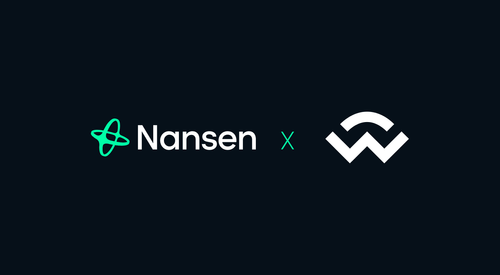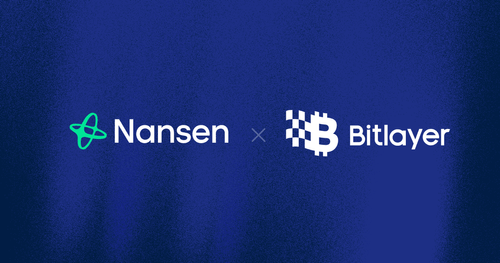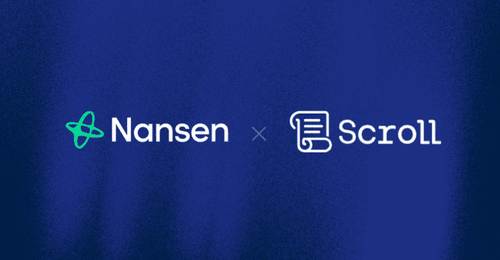What are Some of the top ZK Developments Recently?
ZK continues to accelerate, only gaining more adoption and providing its benefits across all parts of the crypto stack. In this note, we will cover Starkware, Succinct, and Union Build. These three projects cover the current scalability of validity rollups, trustless bridging technology, and embedding ZKPs across all ecosystems such as the OP stack and Tendermint chains.
Starkware
Anecdotally, if you used Starkware in the past, it was not always the smoothest experience - transactions took a while to settle, there wasn't that much to do, it was expensive to use and overall, it was not production-ready compared to its EVM-compatible L2 counterparts such as Arbitrum or Base. However, a lot has changed in the last few years, especially given the recent strides in scalability in 2024. Starkware is now leaps and bounds better in terms of UX. As of last week, Starkware clocked the current state of the L2 to have:
- 500+ TPS
- 2-second transaction times
- Sub $0.01 fees
TVL has been stable at $220m, while stablecoin presence on Starknet continues to grow in recent months, sitting around $86m at the time of writing. In the meantime, there are not that many opportune farming opportunities available but users can still farm dapps via defi token incentives and then build a STRK position to stake with the inevitable staking functionality coming live. Despite lots of progress in the UX front, STRK is down 91% from its ATH set in early 2024, currently sitting at a $734m MC and $3.79b FDV.
A lot of development has happened and the network is in a performant state, but what lies ahead for Starkware?
Broader Accessibility and Addressable Market
Scaling Bitcoin and Enabling Trustless DeFi on Native BTC
Bitcoin remains the largest asset in all of crypto, commanding a market cap of over $1T. For the most part, this Bitcoin is sitting dormant. For BTC holders interested in using it as collateral within DeFi, they must use custodians that introduce a centralization factor, which goes against the ethos of Bitcoin. Some of the current solutions include Bitcoin L2s and sidechains (i.e. Stacks), but Starkware plans to scale Bitcoin with STARKs. Within the next 6 months, Starkware plans on settling on both Bitcoin and Ethereum, potentially unlocking thousands of TPS. It is planned to go live once the soft fork on Bitcoin includes OP_CAT adoption. For context, BTC holders would be able to take out a loan against their native BTC from the Bitcoin blockchain on Starknet. One such project, Lendasat, is currently working on bringing this to fruition.
EVM Support
One of the largest hurdles for Starkware is that it is not EVM-compatible. Of course, this also helped them bootstrap native Starkware ecosystem apps but it is missing out on the lion’s share of apps users are familiar with such as Aave, Uniswap, and other trusted protocols. This integration will happen through KakarotzkEvm, which will bring about support for all the EVM-related wallets, bridges, and dapps to Starkware. Thus, Starkware will be the first DualVM validity rollup, supporting both EVM and Cairo.
Bolt Upgrade
The ‘Bolt’ upgrade went live at the end of August and it introduced two main features:
- Parallel execution
- Enables independent transactions to be executed simultaneously (as opposed to sequentially)
- Block Packing
- Optimizes gas costs by posting many blocks in a single proof to mainnet - this decouples cost from block size
Together, these features scale the network for much broader adoption and ensure it scales for the future.
Decentralization and Scalability
Staking functionality is coming in Q4 2024. This shift to a staking model is part of the progressive decentralization of layer 2. The staking functionality will unlock new use cases for STRK and it will be the first layer 2 to implement this mechanism this year.
zkthreads
As for scalability, Starkware plans to introduce what they call zkthreads. They allow a way to scale the Starknet network horizontally by allowing ZK execution sharding. It differs from L2s/L3s in a few ways, but the use cases it brings include:
- Scalable DEXs
- Users would not have to pay fees on every trade they make, only when they withdraw.
- Session-based games
- Poker and other such games are examples of times when users should not have to pay a fee for each move.
- Oracles, bridges, and even Uniswap Hooks could potentially be implemented.
Another key factor is that zkthreads default to the base layer if the zkthread goes down for any reason. Thus, you can imagine the trust guarantees a zkthread-based DEX could offer traders. CEXs go down quite often but if a zkthread did, they would automatically trade via the base layer. To learn more about zkthreads, check out the research here.
Succinct
Succinct has made a lot of strides in the zk space, mainly their efforts to bring the benefits of zk to many ecosystems. Fresh off a $55 million raise led by Paradigm, they are one of the teams bringing ZK technology mainstream, starting with their product, SP1. SP1 is a 100% open-source zkVM that can be used for rollups and other ZKP applications. A lot of zk adoption has been hindered by specialized domain knowledge or unclear ZKP frameworks; however, SP1 aims to remedy this through its general-purpose and performant zkVM for rollups, bridges, infrastructure, and others to utilize ZKPs. In simpler terms, they're allowing developers access to ZKPs that were otherwise quite inaccessible, requiring very little development and getting performant and cheap proofs that can improve developer activity 100x.
SP1 is already used by the top projects in the space today, securing over $1b in TVL:
- Polygon is using it to build the ZKPs needed for Agglayer. This allows Agglayer to serve as a unified liquidity and interoperability layer by tapping into the perks of ZKPs such as fast finality, better security and is accessible by any ecosystem (OP Stack chains, Tendermint, and more).
- Others include: Celestia, Avail, Hyperlane, Noble, and many others.
At the start of September, they combined SP1 with the OP Stack to create a zkEVM rollup. Prior, zkEVM rollups were challenging to build due to the required cryptography expertise but SP1 allows any OP Stack chain to use ZKPs in under an hour. The benefits include a viable transition for Optimistic rollups to ZK, faster finality (1hr vs the 7-day fraud proofs), low proving costs (with exponential improvements for cost reduction), and enables any EVM tooling and smart contracts to work with OP Succinct Rollups.
Given the confirmation of the appchain thesis by some of the top teams in the space (Uniswap, Coinbase, etc.) there is a lot of reasons for builders to launch their own roll-up due to incentives and there will be a huge network effect for OP Stack/ OP Stack Succinct chains specifically.
In short, Succinct is bringing ZKPs mainstream through their SP1 product and it’s allowing significant improvements in UX and security for some of the top chains and products today, securing over $1b in TVL already.
Union
The last project to mention for the week is Union, an interoperability protocol connecting chains across any ecosystem using ZK infrastructure. A similar comparison is LayerZero, which is also a generalized messaging platform. However, Union differs in its implementation which uses ZK cryptography and BLS signatures to bring inter-blockchain communication (IBC) to all ecosystems. At its core, IBC is a generalized messaging network for chains to “communicate” with one another. It establishes a clear set of standards for blockchains to adopt but has so far been hindered by its inability to run a light client for Ethereum and other EVM chains; thus, IBC has mainly been limited to just the Cosmos ecosystem. Union unlocks IBC for all other chains and does so in a near-trustless and secure manner.
Last week, Union had their Trusted Setup Ceremony to secure Union’s zk system. They had thousands of contributors to ensure the system was secure and this was a big step needed on the road to mainnet. In short, Union is another interesting application of ZK that allows users to bridge their money in a more trustless way than some of the more centralized counterparts today.




